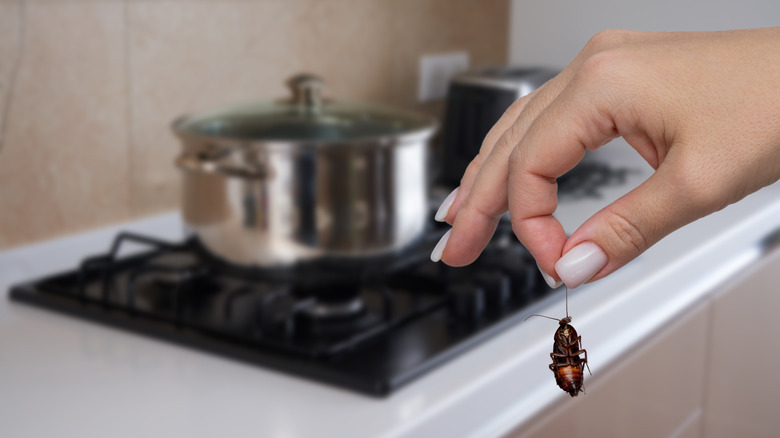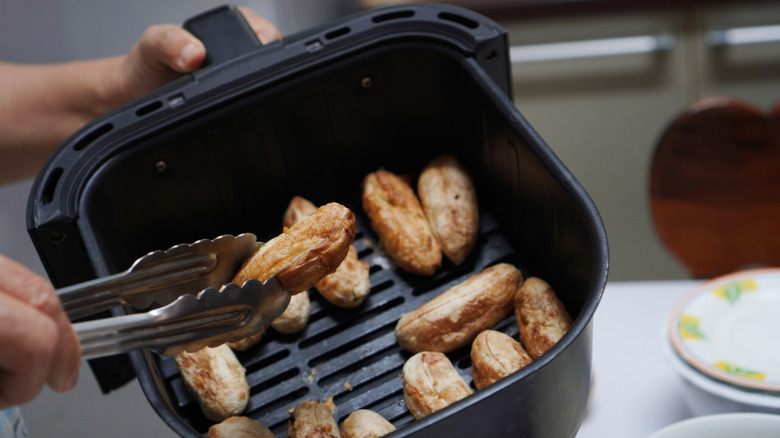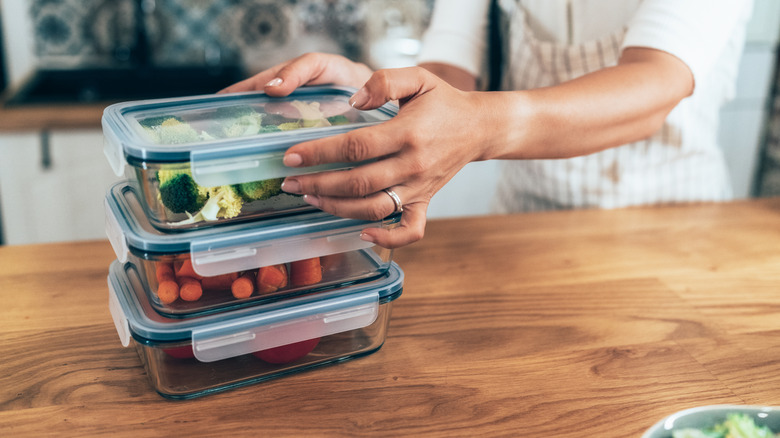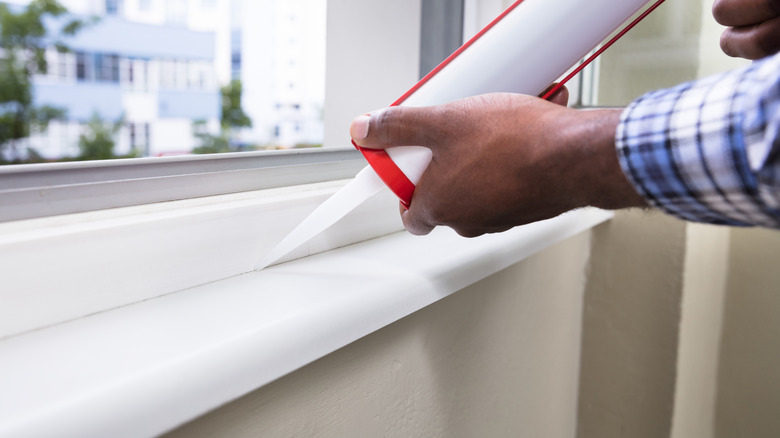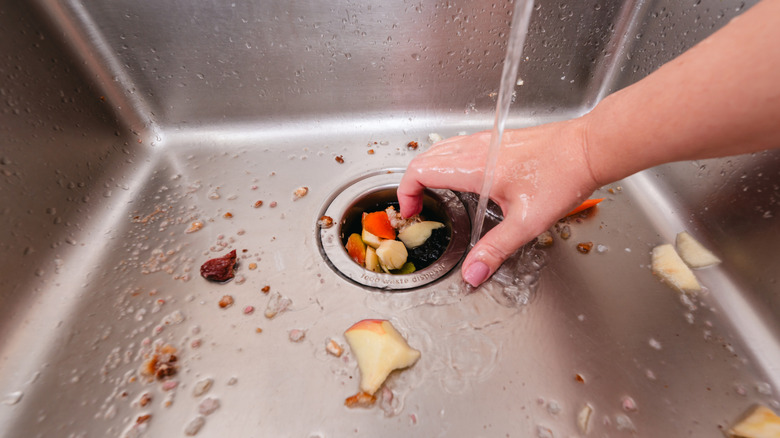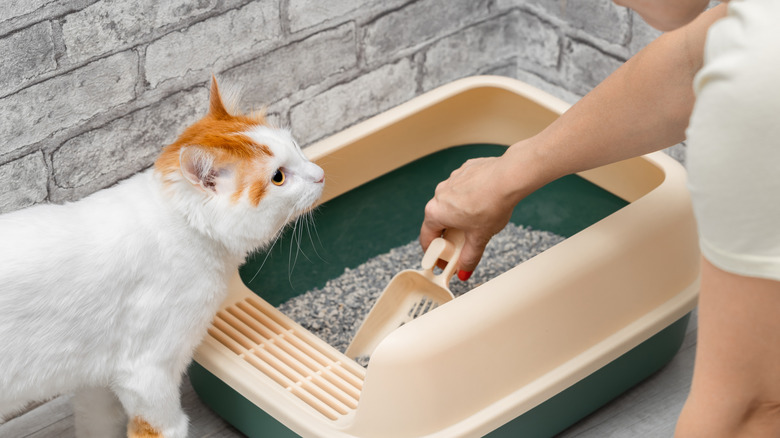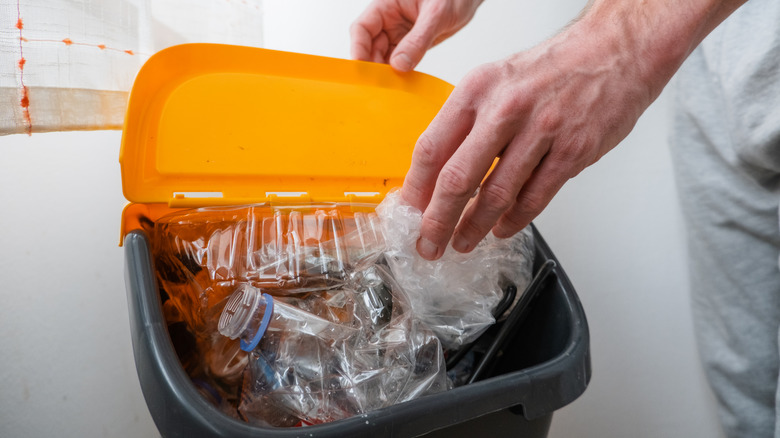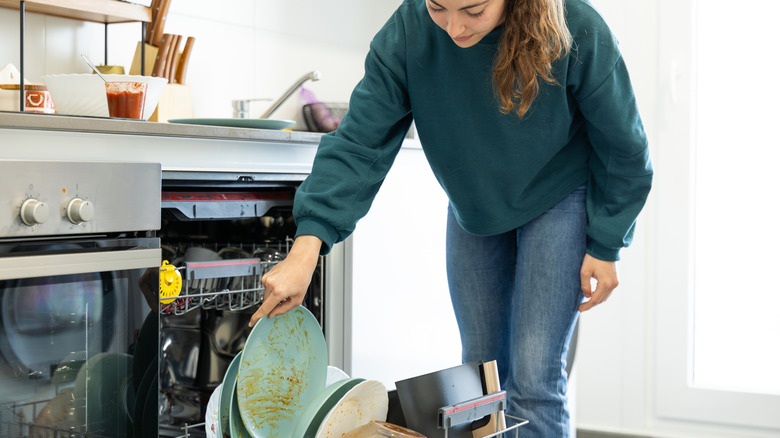Avoid These 16 Things If Your Home Is Attracting Roaches
Roaches aren't just gross and creepy to see crawl around your space. They also carry some seriously harmful bacteria that can put your family members at risk of getting sick. The worst part? These pests thrive in indoor settings where there's always some kind of food source, moisture, and places to hide. For them, having access to just these three are enough for them to breed and multiply at a fast rate, eventually leading to a full-on infestation. That's why it's crucial to always remain vigilant and know the common warning signs of a cockroach infestation – it's the last thing you want to deal with.
Believe us when we say roaches are everywhere. According to the U.S. Census Bureau, nearly 14 million households out of 124 million reported they had a roach incident within a 12-month period in 2020. That means for roughly every nine homes, at least one home is dealing with these creepy invaders. With their ability to squeeze into the tiniest cracks and survive off of anything, roaches can quickly turn even the cleanest homes into a breeding ground for pests harboring all kinds of bacteria. Making changes to the tiniest habits can have a major impact on keeping roaches out of your home. From the way you store food to having designated eating areas, being proactive can save you from roaches secretly hiding out in the darkest and dampest areas of your home.
Leaving dog food out
Do you like to leave pet food out for your dogs to eat as they please? You might want to rethink that choice — it might be what's inviting roaches into your home. Roaches love dog food because it's packed with proteins and nutrients that support their survival. You know what they love more? Spoiled dog food. In addition, these pests can spread harmful bacteria in the food bowls they crawl across, such as Salmonella and Streptococcus, which can lead to your dog getting seriously ill.
Letting heat and moisture build up
While raising the thermostat when you're away is a great way to cut energy costs, don't raise it too much. This can cause heat and moisture to build up inside of the home, and heat and moisture are two conditions roaches love. It's why they're often spotted in bathrooms, under sinks, and behind appliances. When outdoor temperatures become unbearable, these pests seek shelter in a warm area and have the ability to quickly infest a home. If your home feels moist even when the air conditioner is running, it may be time to naturally dehumidify your home (or invest in a dehumidifier).
Having a compost bin inside the home
If you just started composting, placed the bin next to your sink, and threw anything and everything in there, don't be shocked when roaches show up. A sloppy pile of decaying food is practically a buffet for these pests. Once they've found a nice, cozy home in your compost bin, it's only a matter of time before they take over the kitchen. Keep roaches at bay by maintaining a balanced bin and properly storing compost. This starts with using an appropriate bin with a pestproof lid, such as the Utopia Kitchen compost bin for kitchen countertops.
Not throwing out alcoholic beverages
It can be tempting to leave unfinished drinks on the counter and hit the sack after an evening of entertaining guests, but leaving out wine glasses and bottles with alcohol in them overnight is something to avoid to keep roaches far away. Roaches are drawn to sugar, so your unattended drinks become an open invitation for these pests. If you don't want to start your morning by seeing a dead roach in your wine glass, just pour the drinks in the sink and rinse the glasses out.
Not cleaning your air fryer routinely
Neglecting to clean your air fryer can cause a roach problem. Don't believe us? There are countless Reddit users seeking advice on what to do about roaches inside their air fryers. You may not think much of a little bit of leftover grease after frying up some sweet potato fries, but roaches are always on the lookout for food. If you're unlucky, even the tiniest bit of crumbs and oil left in the air fryer are enough to attract theses pests.
Keeping food in its original packaging
We know how tempting it can be to keep food in its original packaging if you think you'll finish it soon enough, but this is something you may want to reconsider. Store-bought packaging isn't exactly pestproof. Roaches have the ability to easily gnaw through paper boxes and plastic bags without much effort at all. Try and make a habit of smarter storage when it comes to food, transfering items such as cereal and rice into airtight containers (such as OXO Good Grips containers).
Not cleaning your coffee station
It may seem like an unsuspecting place for roaches to hide, but your coffee machine and the area around it can become a hotspot for roaches and other pests if you're not regularly cleaning your coffee station. Just think about it: The warm, dark interior of a coffee machine combined with water drips, sugary residue from creamers and syrups, and coffee grounds come together to create the perfect conditions to attract roaches and all sorts of other pests. To prevent this from happening, make it a habit to wipe down your coffee machine daily, empty used grounds immediately, and clean the area around the machine after you've used it.
Cracks and crevices around doors and windows
Not only are cracks and crevices around your doors and windows a way to let hot or cold air in, they're also easy entry points for roaches and other pests — even cracks as tiny as 1/16 of an inch are wide enough for roaches to get through. To keep these unwanted visitors out, routinely inspect the inside and outside of your home and seal any cracks, crevices, or holes you find. It's also a good idea to have caulk and other sealants, such as weatherstripping and silicone, on hand for quick repairs whenever necessary.
Not running your garbage disposal enough
Whether you're the type of person that puts food down the garbage disposal or avoids doing so, it's inevitable for even the tiniest bits of food to end up in the drain. If you're not running the disposal routinely, you end up with scrap buildup that causes bad odors and creates a moist and food-rich environment that attracts roaches. Make sure to run your disposal regularly to flush out leftovers and make your sink less inviting to unwanted guests. Also, throw some ice down the disposal and run it to ensure food pieces are dislodged from the blades.
A dirty litter box
This shouldn't come as a surprise, but roaches consider anything food, even your cat's feces and urine. Not only does a dirty box make your home smell bad, but the moisture and decaying organic matter make them highly attractive to roaches. Stay on top of cleaning it regularly and changing out the litter every chance you get. Also, if you don't already, keep litter boxes in a well-ventilated area. Many cat owners have found success with keeping roaches at bay by swapping biodegradable litter for silica gel- or clay-type litters, which pests don't consider food.
Leaving books and magazines in stacked piles
Once again, roaches consider anything food. Cardboard, book bindings, and the glue that holds paper together are also appetizing for these pests. If you've been putting off organizing your office or attic and left books and magazines piled up, you might be creating the perfect haven for roaches to hide in. Roaches are active at night, so they like to stay in dark spaces during the day. Cluttered paper stacks are the perfect hiding spot, plus they snack on books and magazines as they wait for you to go to bed.
Recycling without rinsing
If you don't think much of recycling soda cans, beer cans, and food containers without rinsing them first, you might be setting out a feast for roaches. Take some time to rinse your recyclables before you toss them; even then, make sure to rinse your bins at least once a week. Also, consider lining your bin with a paper shopping bag, such as the ones from Whole Foods and Trader Joe's, as a barrier between your bin and the recycled items. This way, you can just toss the shopping bag and leave your bin residue free.
Letting your kids eat wherever they please
Not everyone's skilled enough to eat without spilling and leaving crumbs, especially children. If you let your kids take their food wherever they please, you're bound to have crumbs and juice spills here and there. This creates an open buffet for roaches in your home. Even if you're on top of vacuuming daily, it's easy to miss spots when little ones are roaming all over the house with crackers and juice boxes in hand. Instead of constantly worrying about where there might be a hidden trail of crumbs, try limiting your little ones to designated areas that you can keep an eye on when they have food.
Leaving dishes that aren't rinsed in the dishwasher
If you like to wait until your dishwasher is completely full before you run it, it might be after your next meal in a few hours or the next day. While a few hours may not be too long, letting food scraps sit can quickly make the dishwasher a roach hangout spot. Say it with us, roaches love food residue! Those plates smeared with pasta sauce and jam from the morning? That's plenty of food for them to fill up on. So, seriously, start rinsing your dishes and containers.
Leaving pet water bowls out overnight
Standing water, such as your dog or cat's water source, is another roach favorite. These pests need water to survive and are constantly looking for sources of moisture. Consider swapping out bowls for designs that make it difficult for pests to reach the water. Also, since your pets don't likely need water throughout the night, it's best practice to empty and rinse the bowl before bed, then give them a fresh, clean refill in the morning.
Not wringing out and drying your used sponge
You should be wringing out and drying your used sponges after each and every use. Not only is it more sanitary, but a damp, moist sponge with food particles on it can easily become a welcome mat for gross bacteria and roaches alike. On top of wringing it, go the extra step and microwave it to make sure it's extra dry and bacteria is eliminated. Just make sure your sponge doesn't have any metal parts before throwing it in the microwave.
